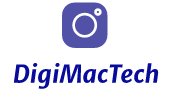Introduction to Looker AI and Predictive Data Visualization
In an era where data-driven decision-making is paramount, organizations are constantly seeking innovative tools to enhance their analytical capabilities. Looker AI, a leading platform in data visualization and business intelligence, has taken a significant leap forward by introducing predictive data visualization. This powerful feature allows users to not only visualize their data but also to anticipate future trends and outcomes. In this article, we will delve into the functionalities, benefits, and implications of predictive data visualization in Looker AI.
The Evolution of Data Visualization
Data visualization has come a long way from static charts and simple graphs. Initially, data representation was primarily about delivering factual insights through basic visuals. However, as the volume and complexity of data increased, the need for more sophisticated tools emerged. This led to the development of interactive dashboards and real-time analytics, enabling users to explore their data dynamically.
The Role of AI in Data Analysis
Artificial Intelligence (AI) has fundamentally altered how businesses analyze and interpret data. With machine learning algorithms, organizations can now automate the analysis process, uncover hidden patterns, and make informed predictions. Looker AI harnesses the power of AI to provide users with predictive insights that can significantly improve their strategic planning and operational efficiency.
Understanding Predictive Data Visualization
Predictive data visualization refers to the graphical representation of data that not only displays historical trends but also forecasts future scenarios based on statistical models. This concept combines traditional data visualization techniques with advanced analytics, providing a comprehensive view of potential outcomes.
Key Features of Predictive Data Visualization in Looker AI
- Forecasting Trends: Users can easily identify trends and make projections about future performance based on historical data.
- Interactive Dashboards: Looker AI offers interactive dashboards that allow users to manipulate data visuals, enabling deeper analysis and exploration.
- Real-time Insights: The platform provides real-time updates, ensuring that users always have access to the most current data.
- Customizable Visuals: Users can customize visualizations to suit their specific analytical needs, enhancing the relevance of insights.
- Collaboration Tools: Looker AI promotes collaboration by allowing teams to share insights and visualizations seamlessly.
Benefits of Using Predictive Data Visualization
Implementing predictive data visualization can lead to numerous advantages for businesses:
- Informed Decision-Making: By visualizing potential outcomes, organizations can make data-informed decisions that align with their strategic goals.
- Enhanced Efficiency: Automating the forecasting process reduces the time spent on manual data analysis, enabling teams to focus on critical tasks.
- Proactive Strategies: Predictive insights empower businesses to adopt proactive strategies, mitigating risks and capitalizing on opportunities before they arise.
- Improved Customer Understanding: Analyzing customer data can reveal trends in behavior, helping businesses tailor their offerings to meet client needs more effectively.
- Competitive Advantage: Organizations that leverage predictive data visualization can outperform competitors by staying ahead of market trends.
Real-World Applications of Predictive Data Visualization
Numerous industries are already benefiting from the integration of predictive data visualization:
Finance
Financial institutions utilize predictive analytics to assess credit risk, forecast market trends, and optimize investment portfolios.
Healthcare
In healthcare, predictive data visualization aids in patient outcome predictions, resource allocation, and managing supply chains effectively.
Retail
Retailers analyze customer purchasing patterns to optimize inventory levels, identify seasonal trends, and personalize marketing strategies.
Challenges and Considerations
While predictive data visualization offers numerous benefits, it is essential to consider potential challenges:
- Data Quality: The accuracy of predictions relies heavily on the quality of the underlying data. Organizations must ensure data integrity and cleanliness.
- Complexity: Developing predictive models can be complex and may require specialized expertise.
- Over-Reliance on Predictions: Organizations should avoid making decisions solely based on predictive insights without considering external factors and context.
Future of Predictive Data Visualization
The future of predictive data visualization looks promising. As AI technology continues to advance, we can expect to see more sophisticated algorithms that enhance predictive accuracy. Additionally, as organizations become more data-centric, the demand for intuitive and user-friendly visualization tools will increase. Looker AI is well-positioned to lead this evolution, continually innovating to meet the needs of businesses.
Getting Started with Looker AI
For organizations looking to harness the power of predictive data visualization, getting started with Looker AI is straightforward:
- Sign Up: Create an account on the Looker AI platform to access its features.
- Data Integration: Integrate your data sources with Looker AI to enable seamless analysis.
- Create Visualizations: Utilize the platform’s tools to create customized visualizations that meet your specific needs.
- Leverage Predictive Features: Explore the predictive analytics features to gain insights into future trends.
- Collaborate: Share insights with your team to foster collaboration and informed decision-making.
Conclusion
In conclusion, Looker AI’s predictive data visualization feature represents a significant advancement in the field of data analytics. By combining traditional visualization techniques with predictive analytics, organizations can gain actionable insights that empower them to make informed decisions. As the demand for data-driven strategies continues to grow, tools like Looker AI will be at the forefront, enabling businesses to navigate an increasingly complex data landscape with confidence.
